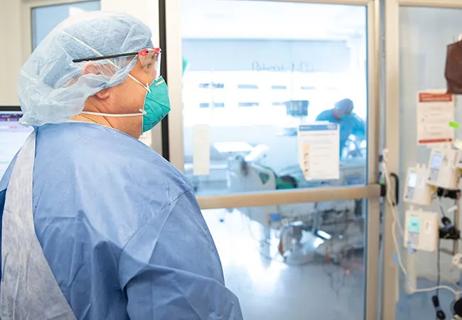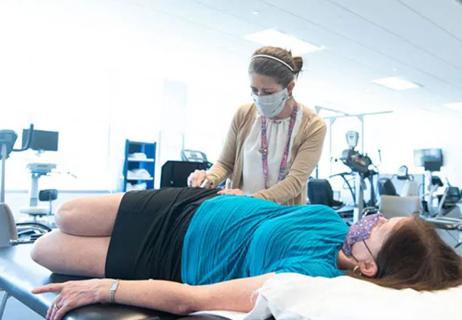Patients who fail two or more antiepileptic meds should be referred for evaluation

Cleveland Clinic is a non-profit academic medical center. Advertising on our site helps support our mission. We do not endorse non-Cleveland Clinic products or services. Policy
For patients with epilepsy who are unable to bring their seizures under control with adequate trials of two antiepileptic medications, data show that the likelihood of attaining freedom from seizures using medications is less than 5 percent.1 This is the case despite the availability of more than 30 FDA-approved antiepileptic medications.
Fortunately, other options are available for patients with difficult-to-control seizures. One of these options is epilepsy surgery.
Surgery has been successfully used to treat epilepsy for more than 60 years and is recommended for highly selected patients by every professional epilepsy society worldwide. Despite this track record, the idea of treating epilepsy with brain surgery still makes patients — and even many healthcare professionals — uneasy. This is unfortunate, because despite misperceptions, the risks of epilepsy surgery are low and the potential gains are usually life-changing.
At Cleveland Clinic, epilepsy surgery results in long-term seizure freedom for about 60 percent of patients who undergo it (see previous ConsultQD post detailing outcomes for major epilepsy surgery types). Moreover, Cleveland Clinic data show that many patients who do not achieve complete seizure freedom after surgery still report quality-of-life gains that are clinically meaningful.
Because of sophisticated imaging and new surgical technologies and techniques, the risk of surgery is very low. In contrast, the risks of lifelong uncontrolled epilepsy are well known and high. Accidents during seizures sometimes cause fractures, burns, bleeding and miscarriages. Additionally, people with uncontrolled epilepsy have 15 times the risk of sudden unexplained death (SUDEP) compared with the general population, and their risk is also much higher than that of people with controlled epilepsy.2-5
Uncontrolled epilepsy also can take a significant psychological toll, as it is associated with a high prevalence of depression and anxiety as well as elevated suicide rates.6 Psychological effects are typically exacerbated by a lack of independence, as uncontrolled seizures prevent patients from driving and often from working. Many patients also see their personal relationships become strained as they become highly dependent on others for close monitoring to prevent injury.
In short, uncontrolled epilepsy can relegate a person to a life sentence of high medical expenses, increased health risks, significant lifestyle limitations and shorter lifespan.
Uncontrolled epilepsy continues to be a major problem in the U.S. and worldwide. What’s especially unfortunate is that our capacity to address it with surgery is vastly underutilized. A few numbers tell the story:
Cleveland Clinic has one of the highest-volume epilepsy centers in the world, having performed more than 400 surgical procedures in 2018. While few centers could take on hundreds of surgical cases, many could perform substantially more than they do now. The obstacle is the lack of referrals for surgical evaluation rather than a lack of capacity.
A high surgical success rate depends on careful patient selection by a team of epileptologists and neurosurgeons.
At Cleveland Clinic, all potential surgery candidates are admitted to a dedicated epilepsy monitoring unit for inpatient evaluation. Medications are reduced or stopped, and the patient is allowed to have seizures while undergoing continuous EEG and video monitoring to confirm and refine the diagnosis. We also obtain a high-resolution brain MRI (3T) to assist in localization of a potentially operable epileptogenic focus. Other tests that may be used include PET scan, magnetoencephalography (MEG), functional MRI and invasive evaluation with stereoelectroencephalography (SEEG).
Unfortunately, not all patients are determined to be good candidates for surgery. It is surprising how many patients we encounter who have been treated for years but who actually have psychogenic nonepileptic seizures and thus should be treated with cognitive behavioral therapy (CBT) and medications for depression and anxiety as needed.
Other patients are deemed too risky for surgical resection, often because the epileptogenic focus is located near critical areas of the brain (such as speech, motor, sensory and visual regions). For such patients, three major options are available, all involving neuromodulation: vagus nerve stimulation, responsive neurostimulation and deep brain stimulation (DBS). DBS, used for many years for Parkinson disease and essential tremor, was approved last year in the U.S. for epilepsy.
Each of these methods reduces seizures in about half of patients and leads to freedom from seizures in approximately 10 percent. There are no definitive guidelines for choosing among these neuromodulatory options, but two broad principles can be useful:
Beyond these neuromodulatory options, the past decade has seen the emergence of two methods of ablating tissue in epileptogenic brain regions without need for craniotomy. The more established option is laser ablation performed under real-time MRI guidance, which is useful for patients with small, focal lesions deep in the brain. Additionally, high-intensity focused ultrasound — a completely noninvasive modality — is currently being investigated for use in selected cases of refractory epilepsy.
In summary, I urge all clinicians who treat patients with epilepsy to follow two simple management rules advocated by the International League Against Epilepsy:
Dr. Najm is Director of the Epilepsy Center at Cleveland Clinic.

Q&A with Brain Trauma Foundation guideline architect Gregory Hawryluk, MD, PhD

Q&A with newly arrived autoimmune neurology specialist Amy Kunchok, MD

A neurocritical care specialist shares what’s spurring growth of this new evaluation approach

Focused ultrasound offers a newer alternative to deep brain stimulation

Prehabilitation can help improve outcomes after spine surgery

Get ready for central vein sign and optical coherence tomography

How these new drugs fit into practice two years out from their first approvals

A conversation on the state of physiatry with the AAPM&R’s Vice President